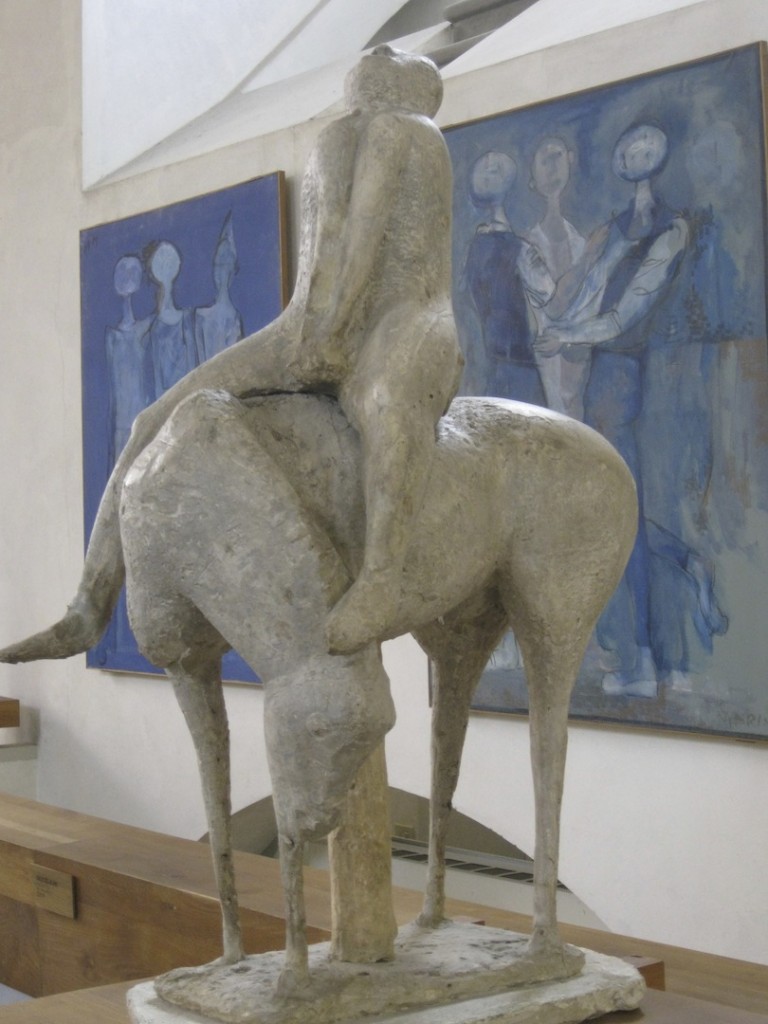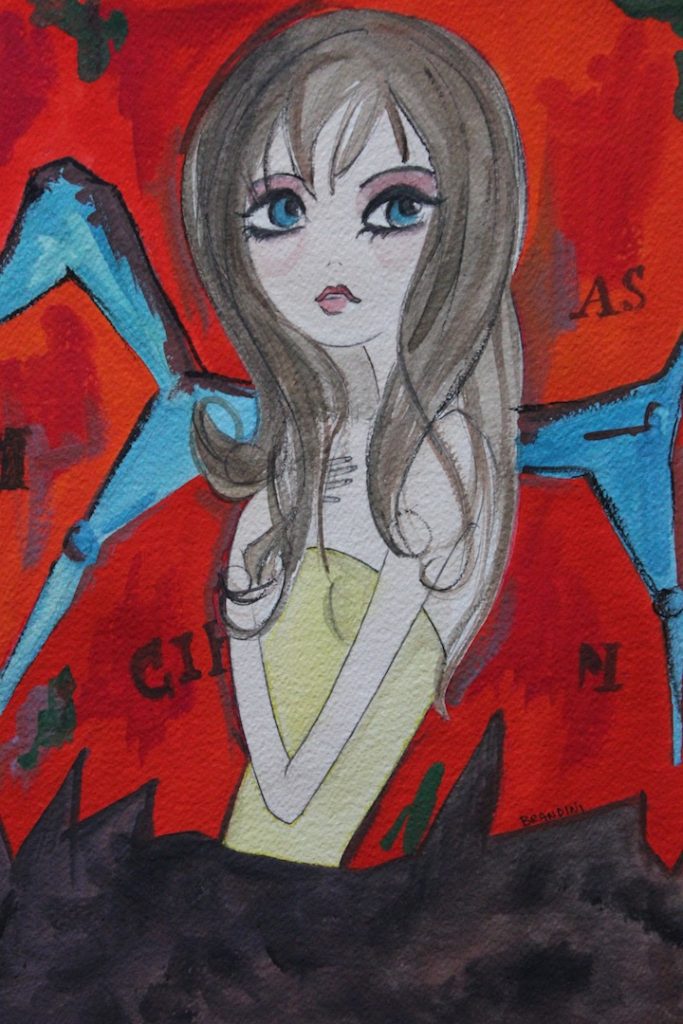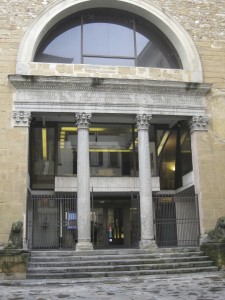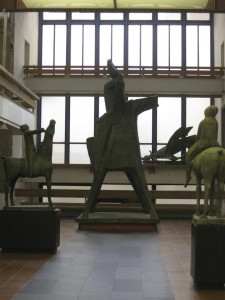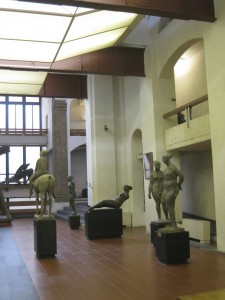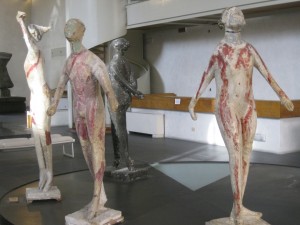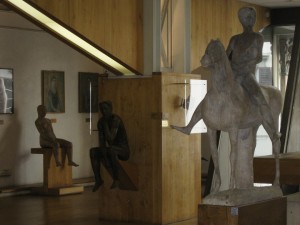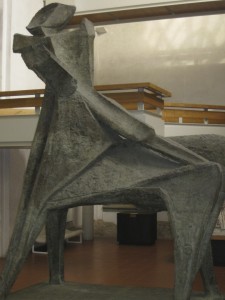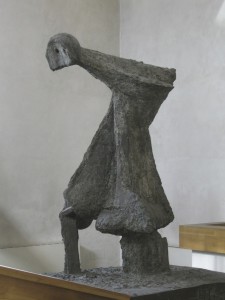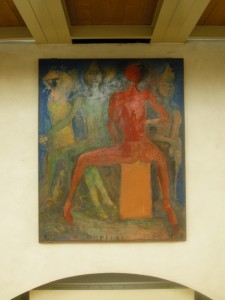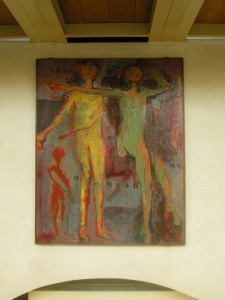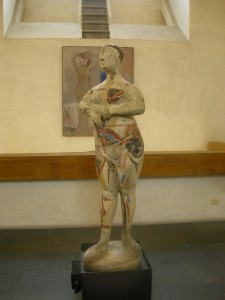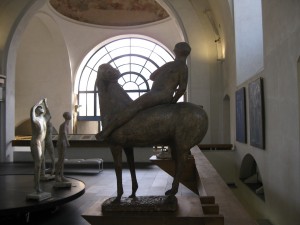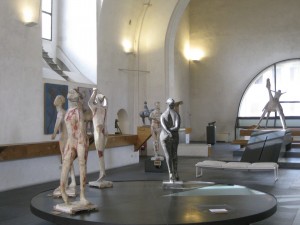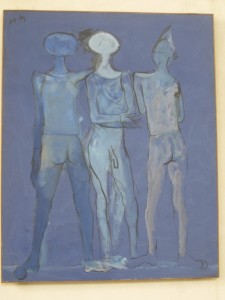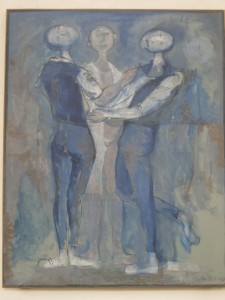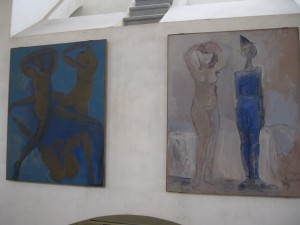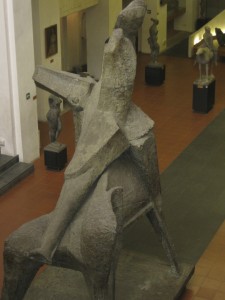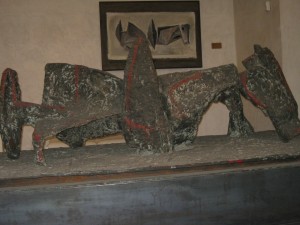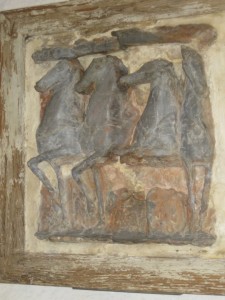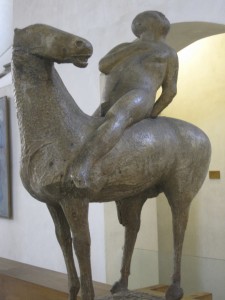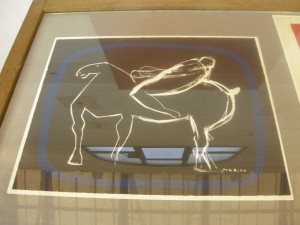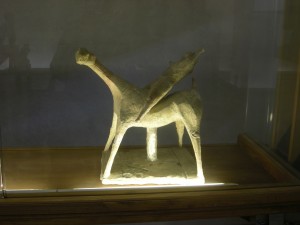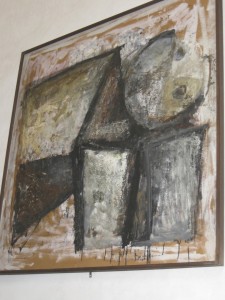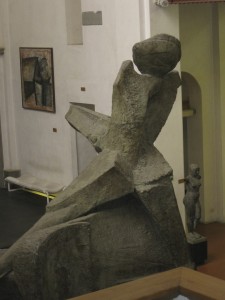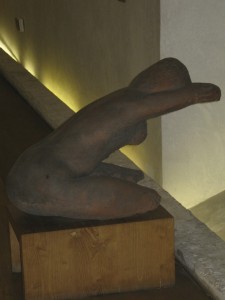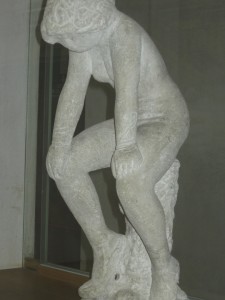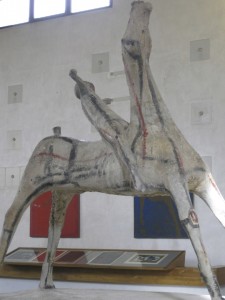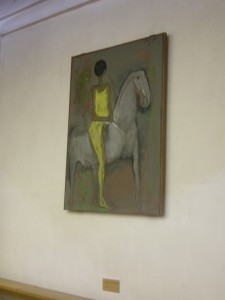“Horse and Rider” Marino Marini Museum
“Mercedes” by Beatrice Brandini
There is a magnificent thing to see in Florence, and is the Museo Marino Marini. Even if you are not interested in art, if you do not know well, or at all, about this artist, you have to visit it because it is one of the most beautiful and solemn things I’ve ever seen.
When you stand in front of the works by Marino Marini, especially his sculptures, invades you a feeling of grandeur, feel the power of the universe, the nature, the sea, the sun, the wind, and it is a nature that expresses itself in all its force and power, that’s how it appears to you the art of this great artist.
Facade of the Museo Marino Marini, ancient church of San Pancrazio
Two internal perspectives of the Marino Marini Museum
Even the location of the museum, the ancient parish church of San Pancrazio (medieval architecture enhanced by the intervention of Leon Battista Alberti), is a highly suggestive. Where it is still perfectly preserved the vast crypt and some historical architecture. But above all, where is the space, spacious and bright, and distributed on multiple levels, to promote the vision of the art of Marini, forcing the viewer to a closer look at different angles.
Sculptures inside the Marino Marini Museum
Marino Marini was born in Pistoia in 1901, already at sixteen he enrolled at the Accademia di Belle Arti in Florence, attending courses in drawing and painting taught by Galileo Chini. In 1922 he became interested in sculpture, directing his tastes towards independent paths, with respect to the cultural patterns of the time (the nineteenth century, for example), impassioning Etruscan art, as defined by Marini simple and refined, but also to the Middle Ages and the international Gothic. All crucial elements profoundly in his art. In the thirties there are already some important awards such as participation at the Venice Biennale, the Milan Triennale and the Quadrennial in Rome. In 1936 appears the Knight, a fundamental work for the artistic development of Marini. In ’37 he won the Grand Prix at the Paris International.
Monumental bronze sculptures in the Marino Marini Museum
In 1941 he was awarded the chair of sculpture at the Brera Academy. Later years are marked by the tragic war and its terrible consequences . Marino Marini is aware of this and so his art. He will return to Milan in 1947 , after having taken refuge in Switzerland, where he will also resume teaching at the Academy . 1948 is an important year for the artist, the Venice Biennale is dedicating an entire room, and from there will also start its international popularity. It will be in fact the United States where not only know the likes of Arp, Calder, Tanguy, but receive honors, awards and will devote to the preparation of numerous exhibitions. In ’52 the International Grand Prize for Sculpture at the Venice Biennale, in ’54 the Accademia dei Lincei in Rome, then exhibitions in Monaco, Rotterdam, Stockholm …. In ’59 achieves an equestrian monument to a square of Aja, in honor of the war dead. It’s the biggest bronze sculpture executed by the artist, six meters. Under the base this description: “It was built, destroyed and it remained a sad song on the world”.
Marino Marini “The Appearance”, 1952, “The Theatre of Masks”, 1956
Marino Marini sculpture
In Milan , in ’73, in the Civic Gallery of Modern Art inaugurated a museum dedicated to the artist. In ’75 a permanent statue in the Uffizi Museum in Florence, and then works in the Castello Sforzesco, the Pinacoteca di Monaco of Bavaria, thematic exhibitions in Paris, Tokyo and an other many places.
Sculptures in the Marino Marini Museum
Among the many things I’ve read by Marino Marini struck me this statement: “As in love, in art you can not explain everything, some parts remain bright in the shadows of the mystery”. This great artistic truth could be compared to another, equally true, only more caustic, and is one of Tolstoi who said: “What is Art? Critics explain. What do you explain? The artist, if such. has informed his work with a feeling that he has tried. What is therefore to be explained. “
Jugglers, 1954 Jugglers, 1954
Dance Theatre 1966 The Dream, 1951/66
The part of the jugglers and dancers is a kind of journey, inside the Museo Marino Marini, because it represents a theme loved from the artist The movement is a “pretext”, through it, and his gestures, Marini investigates the state of mind, in fragile balance of life, of being, of every man.
Glimpse Marino Marini Museum
Sculpture in Bronze, in the Marino Marini Museum
Marino Marini was all, painter, sculptor, portrait artist, a complete artist and immense. His art is not abstract because it stops just before you become one; in his later works his horses and riders become more and more stylized as to seem abstract, but they are just more and more spiritual, exhausted. It is a natural evolution of the artist, and is the essence of his poetry, his truth.
Bas-relief of Marino Marini Horse and rider statue in the Marino Marini Museum
If the Marini’s painting is playful, expressing the joy of life, the sculpture actually expresses simplicity and drama, strength. “The knights, the artist says, more and more impressive they lost their old dominion animals and disasters that strike them are similar to those that destroyed Pompeii. I try, therefore, to symbolize the last stage of decomposition with a myth, the myth of heroic and victorious. “
Marino Marini “Horse and Rider”
Marino Marini “Horse and Rider”, sculpture
The forms of Marino, especially in sculpture, are linked esprit de geometries, the triangle, the square, the circle.
Warrior, 1960
Bronze sculpture, inside the Marino Marini Museum
Marino said: “The tragedy can become rich …”.
I like to recall the figure of his wife, affectionately known as Marina. A perfect union in which affection, respect and reciprocity become a brotherhood of souls.
Sculptures in the Marino Marini Museum
The vision of the world and of man by Marino Marini is made over the years more and more dramatic, contours, lines, shapes stylize and distort. The Warriors and Shout 60s become helpless, lifeless fossils. It ‘a more pessimistic view, because there is the awareness that man can not control nature. But alongside this Marini continues to create, Pomone (round female figures that symbolize the fertility of the earth), theaters, masks and the color becomes the protagonist. Marino Marini, therefore, loved the man, with all its contradictions, drama and happiness. His art is born of love, love of man, nature and the universe.
Rider and horse statue in the Marino Marini Museum
The figure of Marino Marini is one of the most important and interesting of the last century, but not only that, I find that his greatest “strength” is the MODERNITY. Every time I found myself in front of one of his works, I have always wondered if it had been realized many years before, or if it were contemporary, but even more, if it belonged to tomorrow. And this is the true greatness of an artist.
Marino Marini “Gentleman Horse” 1938
Good life to all!
Beatrice


